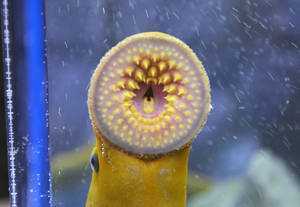25 Jan Lampreys Can Regenerate Severed Spinal Cord – Maybe Humans Can Too
MedicalResearch.com Interview with:
Ona Bloom PhD
 Associate Professor, Center for Autoimmune, Musculoskeletal and Hematopoietic Diseases,
Associate Professor, Center for Autoimmune, Musculoskeletal and Hematopoietic Diseases,
The Feinstein Institute for Medical Research
Associate Professor, Department of Molecular Medicine,
Donald and Barbara Zucker School of Medicine at Hofstra/Northwell
MedicalResearch.com: What is the background for this study? What are the main findings?
Response: Scientists have known for years that an ancient species of fish called the lamprey has a remarkable ability to rebuild their spinal cord after it’s been severed. After the lamprey spinal cord is cut, they recover from paralysis to fully swimming again in about twelve weeks, without taking any medicines or other treatments. We are studying the lamprey because we want to know the recipe of molecular ingredients that supports successful recovery after spinal cord injury.
The genome of this animal was reported about 5 years ago, in a publication led by my colleagues Dr. Jeramiah Smith at the University of Kentucky and Dr. Weiming Li at Michigan State University. It turns out that many aspects of the lamprey genome are similar to ours, particularly in the central nervous system. Therefore, we think it is a reasonable expectation that what we learn from lamprey could give us some relevant clues about what might be different about the responses in mammals and other animals that are not good at regenerating their spinal cord.
In this study, we found that the expression of many genes in the spinal cord and brain of lampreys change during their recovery from spinal cord injury. Some of the genes that get activated are similar to what happens when our peripheral nervous system is injured, which is better at regenerating than the central nervous system. We also identified that a pathway called the Wnt pathway plays an important role in the regeneration and recovery process. This is a large, complex network of genes that are important in many biological processes, from embryological development in fruit flies to cancer in humans.
MedicalResearch.com: What should readers take away from your report?
Response: Although we have a lot of work to do to figure out the specifics of how spinal cord regeneration is coordinated even in the lamprey, what we have learned is that pathways that are important for this process are present in humans. Some of the same pathways are also important to spinal cord regeneration in other species that are good at recovering from spinal cord injury, like salamanders and zebrafish.
This discovery is significant because it raises the possibility that the same or similar genes may be used to improve spinal cord repair in other animals and perhaps eventually lead to therapeutic developments for humans.
MedicalResearch.com: What recommendations do you have for future research as a result of this work?
Response: In this study, we have determined all the genes that change in the brain and spinal cord during the course of recovery in the lamprey. Now that we have that information, we will use it to test how the Wnt pathway is regulating recovery and also if other pathways are essential to the process. After careful study in lamprey and other species, we will learn what are the important differences between the lamprey’s responses with those in species where recovery from spinal cord injury is poor.
MedicalResearch.com: Is there anything else you would like to add?
Response: Science is a collaborative effort. Essential to this discovery process was my collaboration with Dr. Jennifer Morgan, director of the Bell Center for Regenerative Biology and Tissue Engineering at the Marine Biological Laboratory, Dr. Jeramiah Smith at the University of Kentucky and others. By combining our scientific expertise, we made progress faster on this project. In the long term, we hope this study will add to our understanding of processes important for therapeutic improvements for spinal cord injury.
None of the authors have financial disclosures or intellectual property related to this study.
Citations:
Paige E. Herman, Angelos Papatheodorou, Stephanie A. Bryant, Courtney K. M. Waterbury, Joseph R. Herdy, Anthony A. Arcese, Joseph D. Buxbaum, Jeramiah J. Smith, Jennifer R. Morgan, Ona Bloom. Highly conserved molecular pathways, including Wnt signaling, promote functional recovery from spinal cord injury in lampreys. Scientific Reports, 2018; 8 (1) DOI: 10.1038/s41598-017-18757-1
The information on MedicalResearch.com is provided for educational purposes only, and is in no way intended to diagnose, cure, or treat any medical or other condition. Always seek the advice of your physician or other qualified health and ask your doctor any questions you may have regarding a medical condition. In addition to all other limitations and disclaimers in this agreement, service provider and its third party providers disclaim any liability or loss in connection with the content provided on this website.
Last Updated on January 25, 2018 by Marie Benz MD FAAD
